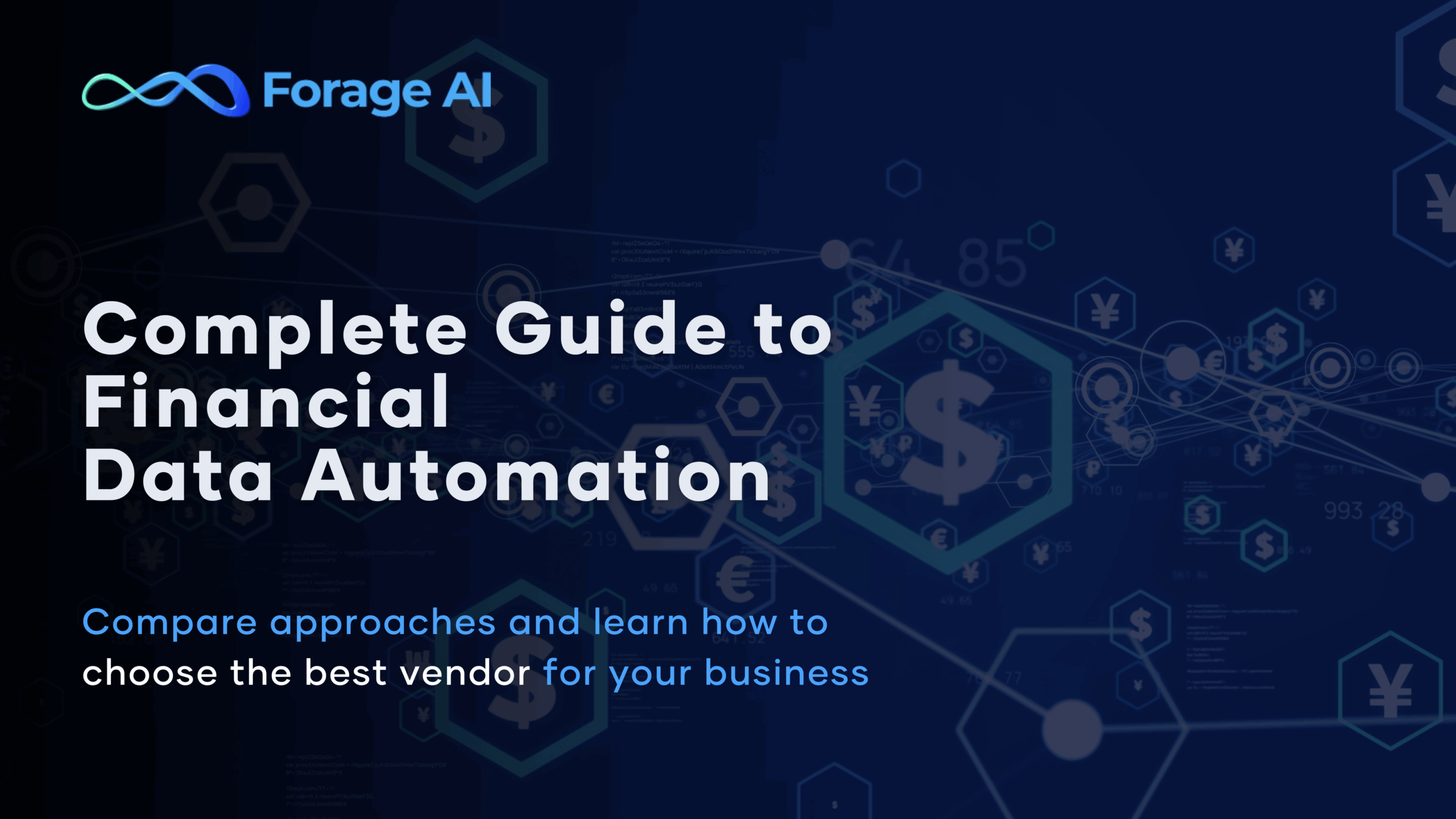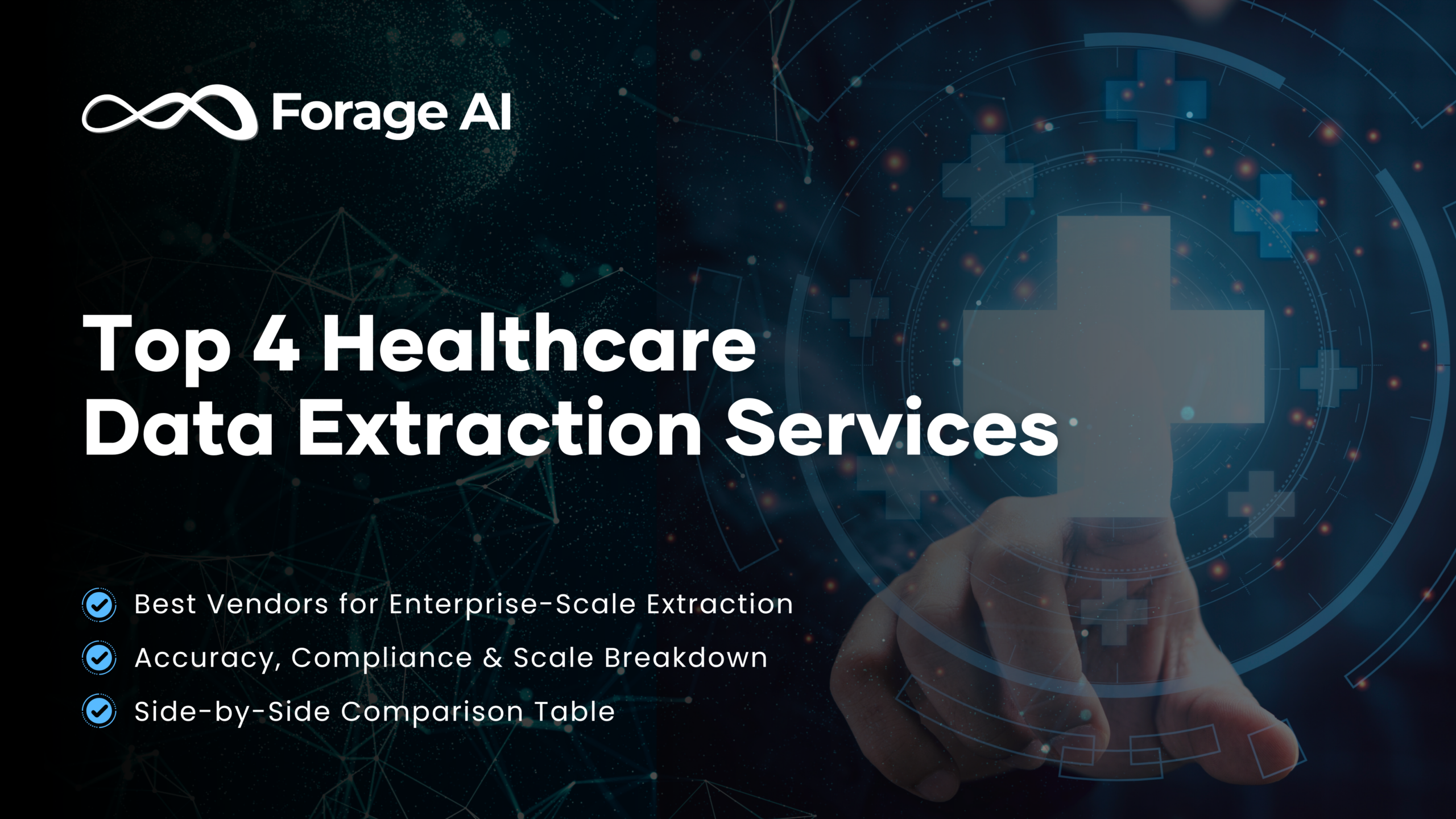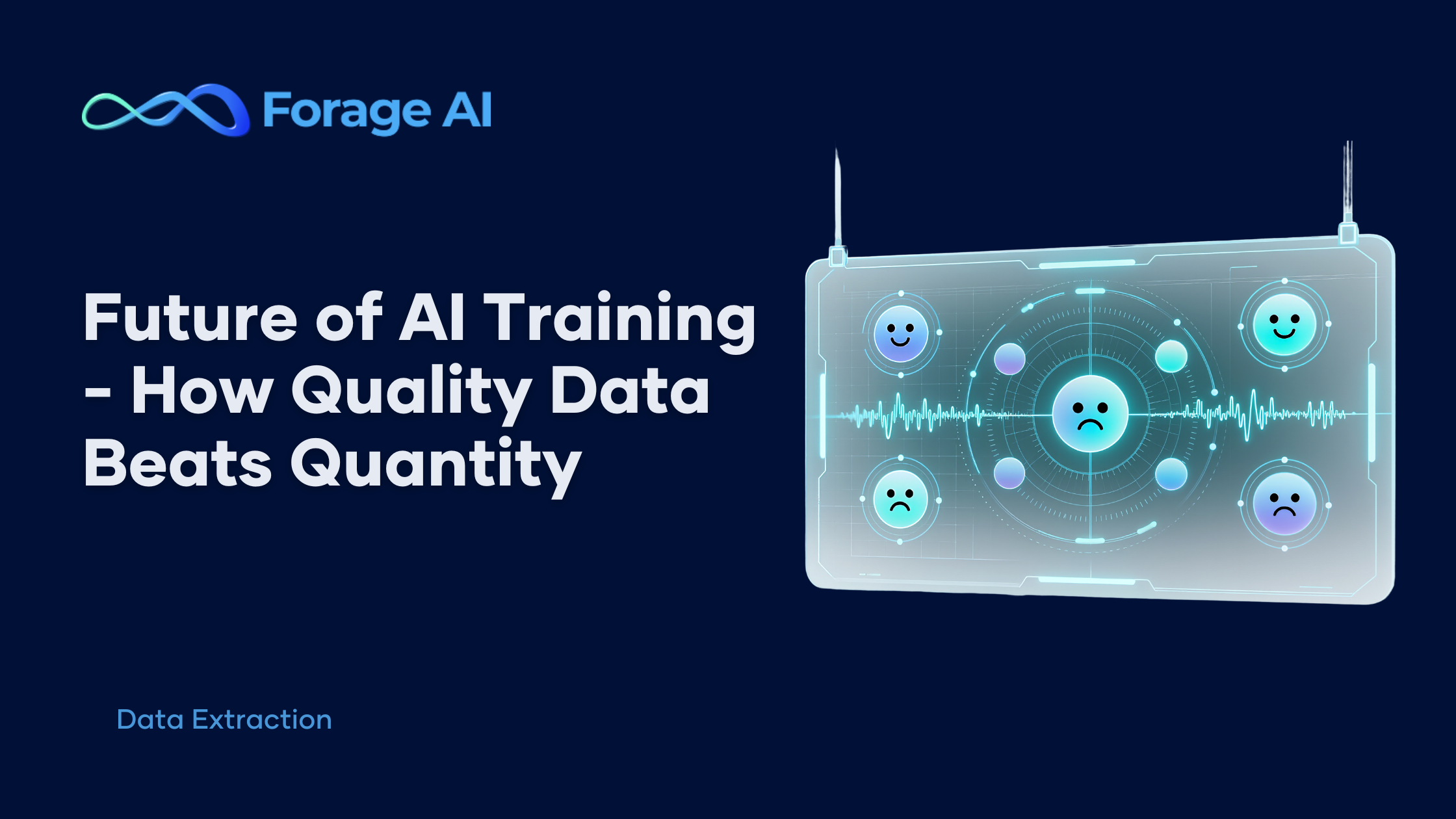Finance teams are drowning in paperwork. While you’re manually typing invoice data into spreadsheets, automation handles the same work in minutes with 90% fewer errors.
41% of CFOs report that less than a quarter of their processes are automated, despite 98% saying they’ve invested in automation technologies (McKinsey). Every hour spent on data entry is an hour not spent on the strategic work that actually drives business growth.
You’re stuck between staying with familiar manual processes or diving into intelligent document processing technology. This guide cuts through the confusion and shows you exactly how to make the right choice for your team.
What is Financial Data Automation?
Financial automation eliminates manual data entry by extracting information directly from documents. Instead of teams manually typing invoice numbers into spreadsheets, software reads documents and feeds clean data straight into your accounting systems.
Financial data automation covers the repetitive tasks that eat up your team’s time:
- Processing invoices and purchase orders.
- Extracting data from financial data statements.
- Monitoring regulatory filings.
- Handling expense reports.
The technology scans documents, understands their structure, and feeds clean data directly into your existing systems. Modern solutions handle everything from simple receipts to complex SEC filings.
The real value? Your team stops doing data entry and starts doing strategic work that actually moves the business forward. This shift represents a fundamental digital finance transformation that modern organizations cannot afford to ignore.
Challenges of Financial Data Processing
Finance teams face mounting pressure from multiple directions that make manual processing increasingly unsustainable.
- Scaling Impossibility – Traditional financial data solutions hit hard limits when businesses grow. Adding more people doesn’t solve the fundamental inefficiency—it just makes coordination harder and increases error potential.
- Error-Prone Manual Work – Studies show manual data entry errors occur in 1-5% of entries. For financial teams processing thousands of documents, this translates to hundreds of mistakes monthly that require costly correction and verification.
- Compliance Complexity – Regulatory requirements multiply yearly while audit expectations intensify. Manual processes struggle to maintain consistent documentation trails and fail to catch compliance issues before they become problems.
These challenges highlight why financial data automation has become essential rather than optional. Organizations that solve these problems gain significant competitive advantages over those still struggling with manual approaches.
From Manual to AI-Powered: Your Processing Options
You’ve got three main approaches, each with distinct advantages and limitations.
Manual Processing
- This is where most teams start. Print documents, type data into Excel, and hope for the best.
- While this works for small volumes, it creates significant bottlenecks as you scale.
- The approach looks cheaper upfront but creates ongoing labor costs. Businesses like IBM eliminated 35,000 human hours annually through automation.
Basic OCR Software
- OCR represents your first step into automation.
- These tools scan documents and convert them to text, handling standardized forms effectively.
- However, they break when formats change and struggle with complex layouts. While OCR improves speed significantly, accuracy remains variable, and integration capabilities are limited.
Intelligent Document Processing (IDP)
- Modern IDP uses AI to actually understand documents.
- These systems adapt to different formats and learn from variations.
- They handle complex financial data statements, regulatory filings with footnotes, and invoices from different vendors.
- Most importantly, automation scales effortlessly—processing 1,000 invoices takes the same time as processing one, while maintaining consistent quality, whether it’s the first document or the thousandth.
The key insight? Automation doesn’t eliminate humans. It frees them up for strategic work that actually moves the business forward. Most organizations hit break-even within 6-12 months, making the transition from manual processing both financially and operationally compelling.
Advanced Intelligent Document Processing for Financial Documents
Modern IDP goes beyond basic text extraction with sophisticated AI capabilities that understand context and relationships.
- Contextual Understanding – Advanced systems interpret complex regulatory filings and cross-reference data across multiple documents using natural language processing. They maintain accuracy even when document formats change.
- Autonomous Processing – AI agents handle multi-step workflows automatically—analyzing documents, validating data, routing approvals, and generating reports. Processing time drops from days to hours.
- Automated Entity Matching – Modern financial data solutions identify when “Goldman Sachs Group Inc.” and “Goldman Sachs” refer to the same entity, ensuring data consistency across your financial database.
- Real-Time Enrichment – Systems automatically pull current market data, regulatory status, and related news to provide complete context alongside extracted financial figures.
These capabilities eliminate manual cross-referencing and data validation, delivering fewer errors, faster processing, and more reliable insights for decision-making.
How to Choose Advanced Financial Data Extraction Services
Don’t get lost in vendor feature lists. Focus on what actually matters for your situation.
- Start with Your Documents – What do you process most? Simple invoices or complex SEC filings? Some solutions excel with standard forms but choke on complex layouts. Know your document types before you start shopping.
- Accuracy Requirements – Basic expense processing might tolerate occasional errors. Regulatory compliance? You need near-perfect accuracy. Look for solutions demonstrating 95%+ accuracy on your specific document types.
- Integration Reality Check – How well does it play with your existing accounting software and ERP systems? Strong API availability enables custom integrations that actually work.
- Volume and Scalability – Consider both current processing needs and future growth. Some solutions handle thousands of documents efficiently while others break down at scale.
- Security and Compliance – Financial documents contain sensitive data. Verify encryption standards, data residency options, and regulatory compliance certifications relevant to your industry.
Key Questions for Vendors:
- What’s your error rate for documents like ours?
- Accuracy varies significantly by document type and complexity.
- How do you handle complex financial statements with footnotes and cross-references?
- This reveals their AI sophistication level.
- What’s the real implementation timeline from contract to production?
- Get specific dates, not vague estimates.
- What ongoing support do you provide post-implementation?
- Understand maintenance, updates, and troubleshooting availability.
- Can you process our actual documents during evaluation?
- Live testing reveals more than demos with sample data.
- How do you handle document variations and format changes?
- This tests adaptability for real-world scenarios.
- What’s your uptime track record and disaster recovery plan?
- Critical for business continuity planning.
- How do pricing models scale with our document volume?
- Understand cost implications as usage grows.
- What training and change management support do you offer?
- User adoption often determines project success.
- Can you provide references from similar organizations in our industry?
- Peer validation reduces implementation risk.
Choose a partner who understands both the technical requirements and business context of financial data processing. Forage AI has processed over 100,000+ PDFs with proven expertise in complex document challenges. We specialize in the irregular structures and custom requirements that break generic solutions.
Ready to Transform Your Finance Operations?
The technology is proven, the ROI is clear, and the competitive advantage is significant. While manual financial data processing holds teams back from strategic work that drives business growth, automation delivers measurable results within months.
Our team designs custom financial data solutions that fit your unique requirements rather than forcing you to adapt to generic software. Whether you need basic invoice processing or complex data extraction, we scale with your organization’s growth.
Ready to see exactly how automation works with your documents? Talk to our automation experts for a free assessment using your actual financial data documents.





